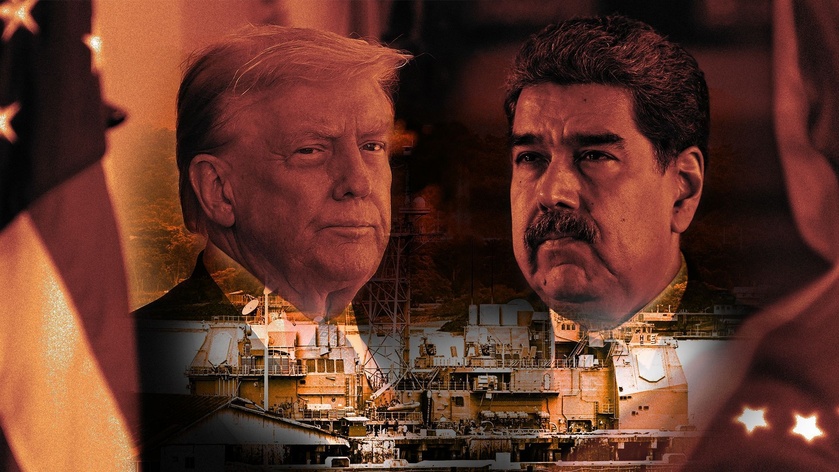The People’s Liberation Army Air Force (PLAAF) has stepped up its efforts to replace aging fighter jets with top-of-the-line J-16 fighters, according to reports in Chinese media. The advanced aircraft has most recently been deployed in Tibet and Xinjiang, meaning all five PLA commands are now using it.
One of China's newest fighters is being rapidly integrated into front-line air forces, allowing the PLAAF to phase out older aircraft like the J-7 and J-8, both of which are based on updated versions of the 1950s-era MiG-21, built by the Soviet Union.
"Chinese old generation military aircraft like the J-7 and J-8 are not enough to deal with the increasing security challenges around its periphery," Fu Qianshao, a retired PLAAF equipment specialist, was quoted as saying in Chinese media on Friday.
"Aircraft replacement is not taking place just in the western border, as China needs more long-range advanced warplanes to deal with increasing provocations from the United States and its allies in the South and East China seas, where the PLA’s key strategic focuses are," he added.
The J-16 is one of numerous aircraft derived from the Sukhoi Su-27, many of which form the backbone of the Chinese air forces. The J-16 is the newest member of the family, entering service in 2016 with a host of advanced equipment, including AESA radar, long-range missiles, and in the newest D-variant, electronic warfare capabilities. It can serve as both a strike aircraft and an interceptor.
Although it is considered a 4.5-generation aircraft, the J-16 is intended to be a key partner for China’s fifth-generation J-20, a true stealth aircraft, in future air operations. The PLAAF has already built at least 245 J-16s, with reported intentions to obtain at least 300 to meet anticipated threats from the United States and its allies in the region.
As such, China’s J-16 is easily the equal of the US’ F-15 Eagle fighter jets and could pose a threat to stealth aircraft like the F-35, too.
The J-16 has been spotted across China’s eastern commands in recent years, including near Taiwan, but the most recent news shows the strike jet being deployed in the west, where Chinese troops have been engaged in violent exchanges with Indian forces in the high-altitude Ladakh region along their ill-defined border.
In the event of a shooting war with India, the J-16 would find itself facing advanced aircraft from the US, Europe, and even Russia, including Sukhoi Su-30s, Dassault Rafales, Lockheed Martin F-16s, and the indigenously-designed HAL Tejas. India has also incorporated Russia’s advanced S-400 air defense system into its military, which would be a potent threat to the J-16.
"Increased air activity by [the] Chinese is being monitored. We have increased the presence of radars and air defense networks. Appropriate non-escalator measures have been taken in time," Indian Air Force Chief V. R. Chaudhary told Indian media in October, adding that the IAF was “expediting the operationalization of recently inducted systems,” including S-400 and Rafale.
https://sputniknews.com/20230120/china-replacing-aging-fighter-jets-with-advanced-j-16s-in-all-five-theater-commands-report-says-1106533732.htmlA similar dynamic is in play in the South and East China Seas, where US military forces have stepped up their presence in recent years amid claims Beijing has expansionist ambitions in the region. Washington has in particular begun selling new jets to Taiwan, an autonomous island Beijing considers to be a Chinese province in rebellion, as well as upgrading their existing fleet of F-16s. The PLAAF has used J-16s for naval patrols and to provide other aircraft, including their powerful Xi'an H-6 bombers, with a screen of electronic jamming during their patrols across the waterways.
US President Donald Trump confirmed on Wednesday the upcoming start of ground strikes against drug cartel targets in Latin America.
He made the remarks during Christmas greetings to the military.
Trump said the United States was "now going after the land" in its fight against drug cartel targets, noting that drug trafficking by sea was down 96 percent.
The U.S. president also extended special congratulations to the crew of the aircraft carrier USS Gerald R. Ford, currently deployed in the Caribbean.

BEIJING (Sputnik) - China has begun operating the world's first intelligent ultra-large oil tanker powered by methanol, the China Central Television (CCTV) reported on Monday.
The tanker, designed to transport crude oil, was successfully put into operation in the city of Dalian in China's northeastern coastal province of Liaoning, the report said. State-owned company Dalian Shipbuilding Industry Co Ltd independently designed and built the vessel, it added.
The tanker is approximately 333 meters (1,092 feet) long and can carry around 2.1 million barrels of crude oil, the CCTV reported. Designed to produce low emissions and having intelligent control capabilities, the tanker will serve the route to the Middle East, among others, according to the report.
The vessel is powered by a dual-fuel methanol engine, which reduces carbon dioxide emissions by 92% compared to conventional fuel, the CCTV reported. It is equipped with an intelligent ship platform, an intelligent liquid cargo ...
A car bomb has killed a senior General Staff member, officials have confirmed
Source: The Investigative Committee
A Russian general has been killed in a car bomb blast in Moscow, the Investigative Committee has reported.
Officials identified the victim as Lt. Gen. Fanil Sarvarov, head of operational training at the General Staff. According to the statement, an explosive device had been planted beneath the vehicle he was traveling in, and detonated on Monday morning in the southern part of the Russian capital.
The blast also damaged several other vehicles and seriously injured Sarvarov’s driver, media reports stated.
Russian officials said one line of investigation is an assassination carried out by Ukrainian intelligence services, noting that Kiev has previously used explosive devices in targeted killings of officials and public figures.
Last December, a bomb hidden in an e-scooter killed Lt. Gen. Igor Kirillov, commander of Russia’s Nuclear, Chemical, and Biological Defense ...














